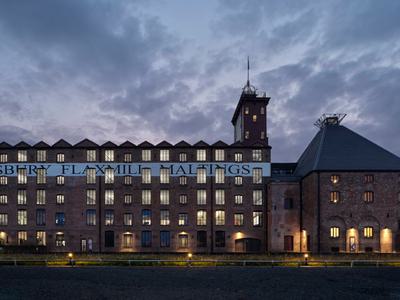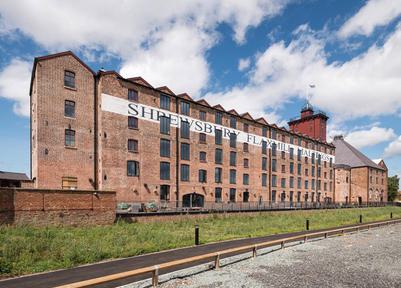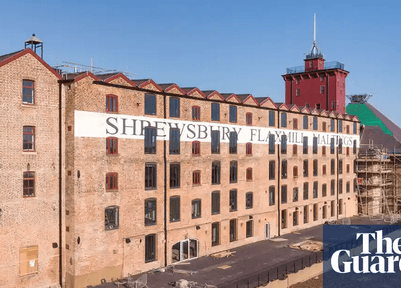- Features
- Shrewsbury Flaxmill Maltings joins English Heritage
Shrewsbury Flaxmill Maltings joins English Heritage

From 1 April Historic England will hand over the visitor attraction at Shrewsbury Flaxmill Maltings into the care of English Heritage.
The visitor experience will become part of the charity’s 400-strong portfolio of historic attractions, welcoming thousands of potential new visitors.
As one of the biggest historic preservation and education charities in the UK, English Heritage is uniquely placed to promote visits and share Shrewsbury Flaxmill Maltings' story with a wider audience.

Rebecca Eade, the regional head of English Heritage's Historic Properties, describes the Flaxmill as "a superb example of living, breathing heritage".
"Rather than a relic from a bygone era, it is instead the blueprint for today's buildings and a vibrant part of Shrewsbury's community."
"Rather than a relic from a bygone era, it is instead the blueprint for today's buildings and a vibrant part of Shrewsbury's community."
About Shrewsbury Flaxmill
Shrewsbury Flaxmill Maltings is one of the most extraordinary buildings in the world. It was the first to have an iron frame, and is known as the great grandparent of skyscrapers everywhere. It has played a central role in the life of the town and the region for centuries; it was the first place in Shrewsbury to be gas lit, it has been a mill, a maltings, and a barracks during the Second World War.
The flaxmill was built in 1796 by Liverpudlian textile entrepreneur John Marshall and funded by Shrewsbury wool merchants the Benyon brothers – its iron frame, designed by structural engineer Charles Bage, intended to guard against fires. All the ironwork came from Hazeldines Coleham foundry.
For 90 years, the steam-powered mill spun linen yarn and thread from flax. It even had its own gasworks. Imagine it in full use, with steam engines at both ends and smoke billowing out of it, all lit up. It is not surprising that, at the time, local residents referred to it as the ‘dragon on the hill’. Child labour was very much in evidence – the old apprentice house where they slept still stands.
In 1897, the flaxmill was converted into Maltings by William Jones of Shrewsbury and operated for a further 90 years, turning barley into malt for brewing, until its closure in 1987.

The building then stood empty for twenty years until, following several failed developments, Historic England stepped in and bought the site in 2005.
Together with partners, Shropshire Council and the Friends of the Flaxmill Maltings, it brought the site back to life as a historic attraction, popular community destination with cafe and event space, commercial space and – soon – residential development.
The Flaxmill has since become a popular national attraction, named a winner in the 2024 RIBA National Awards for Architecture and highlighted as one of the Guardian's top must visit destinations in 2022.
While English Heritage will now take on custodianship of the visitor attraction, Historic England will remain the site's owner and maintains control of the commercial and residential development.
Related stories


